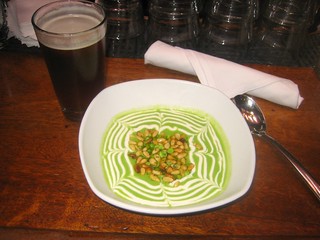Pea soup, ramps, and fiddleheads.
Workers in solidarity.
May Day: sing Joy Spring. 1
***************
What is May Day?
At its 1884 national convention in Chicago, the Federation of Organized Trades and Labor Unions (which later became the American Federation of Labor), proclaimed that "eight hours shall constitute a legal day's labor from and after May 1, 1886." On 1 May 1886, a massive rally was held in Chicago in support of workers striking for the eight-hour day. An unknown person threw an explosive at police as they acted to disperse the public meeting. The bomb blast and ensuing gunfire resulted in the deaths of seven police officers and at least four civilians; scores of others were wounded. 2International Workers' Day began thereafter as a commemoration of that day, of what would become known as the Haymarket Massacre. Now, this day, May Day, is honored as a worker holiday in many areas of the world. In the U.S., Labor Day is celebrated on the first Monday in September.
Going further back in history,
May Day is related to the Celtic festival of Beltane and the Germanic festival of Walpurgis Night. May Day falls half a year from November 1 – another cross-quarter day which is also associated with various northern European paganisms and the year in the Northern Hemisphere – and it has traditionally been an occasion for popular and often raucous celebrations. 3
As May Day can be one totem of spring, so are the arrivals of artichokes, asparagus, beets, fava beans, morels, nettles, radishes — the first in the yearly mid-Atlantic vegetable parade to come. 4 Here are three more.
Fiddleheads, Ramps, & Pea Soup

- Fiddleheads are the tightly coiled tips of ferns. The fiddleheads in North America we eat are usually from the ostrich fern. They are available only in early spring, when ferns grow their new shoots. The young fern fronds are mainly available by foraging. Fiddleheads have a grassy, spring-like flavor with a hint of nuttiness. Many people agree that they taste like a cross between asparagus and young spinach. Some detect an artichoke flavor as well, and even a bit of mushroom.
- Warning: Other ferns can be toxic, so never forage without an experienced guide. Fiddleheads should be at least lightly cooked (some authorities recommend they be completely cooked). Raw fiddleheads can carry food-borne illness and/or cause stomach upset if eaten in large quantities. 5
- Fiddleheads have become a popular menu item in Washington, D.C.-area restaurants. Via DC Eater.
- Recipes, via Blisstree.

- Ramps (allium tricoccum) are an early spring vegetable with a pungent garlic-like odor and onion flavor, found across much of the eastern United States. Recipes via Huffington Post Taste.
The city of Chicago took its name from a dense growth of ramps near Lake Michigan in Illinois in the 17th century, after the area was described by 17th-century explorer Robert Cavelier, sieur de La Salle, and explained by his comrade, the naturalist and diarist Henri Joutel. The plant was called shikaakwa (chicagou) in the language of native tribes. The ramp has strong associations with the folklore of the central Appalachian Mountains [whose inhabitants] have long celebrated spring with the arrival of the ramp, believing it to have great power as a tonic to ward off many ailments of winter. Indeed, ramp's vitamin and mineral content did bolster the health of people who went without many green vegetables during the winter. 6
- Peas: snow, snap, and sweet
Fresh green peas, just shucked, can be sweet and delicious. And, of course, when cooked. How about a bowl of Chilled 'English' Pea Soup?
May Day. Good jobs for the people, and good food.
-----more-----
- 1 Clifford Brown was a jazz trumpeter of the 1950s, who possessed a formidable technique for high-speed playing, with every note perfectly placed and formed, and, at the same time, a lyrical ballad style. Brown died at the age of 25 in a car accident, leaving behind only four years' worth of recordings. Nonetheless, he had a considerable influence on later jazz trumpet players. He was also a composer of note; several of his compositions —including Joy Spring— have become jazz standards. From Wikipedia
- 2 From the Industrial Workers of the World: The brief origins of May Day.
- 3 From Wikipedia.
- 4 At About.com, food writer Molly Watson has assembled a useful summary of the seasonal availability of vegetables and fruits in the mid-Atlantic region.
- 5 Fiddlehead safety, via About.com.
- 6 From Wikipedia
- Why the name VeggieDag Thursday? Here.
- Read all the posts: here. Follow on Twitter with hashtag: #VeggieDag.
- Suggestions and submissions from chefs, writers, and home-cooks welcomed! Contact me here.
*************

.png)









No comments:
Post a Comment
Comment here ...